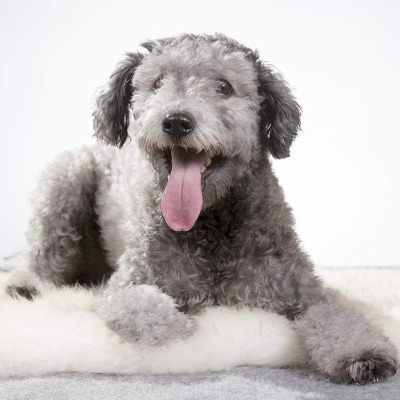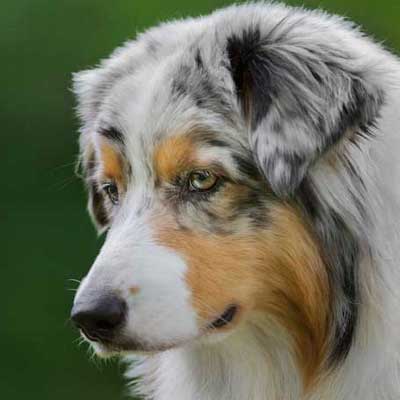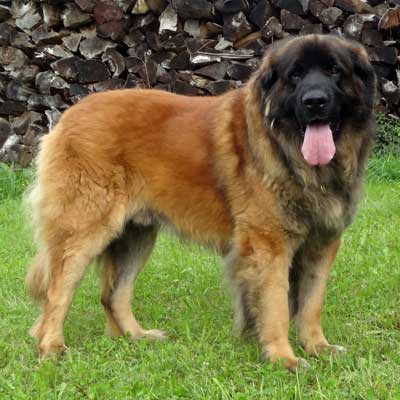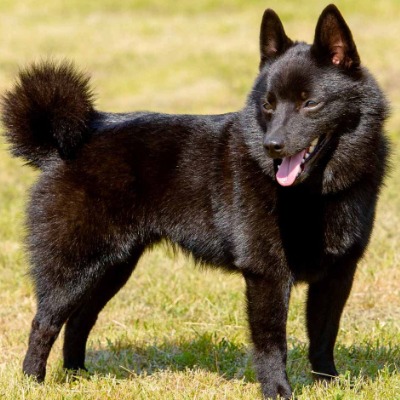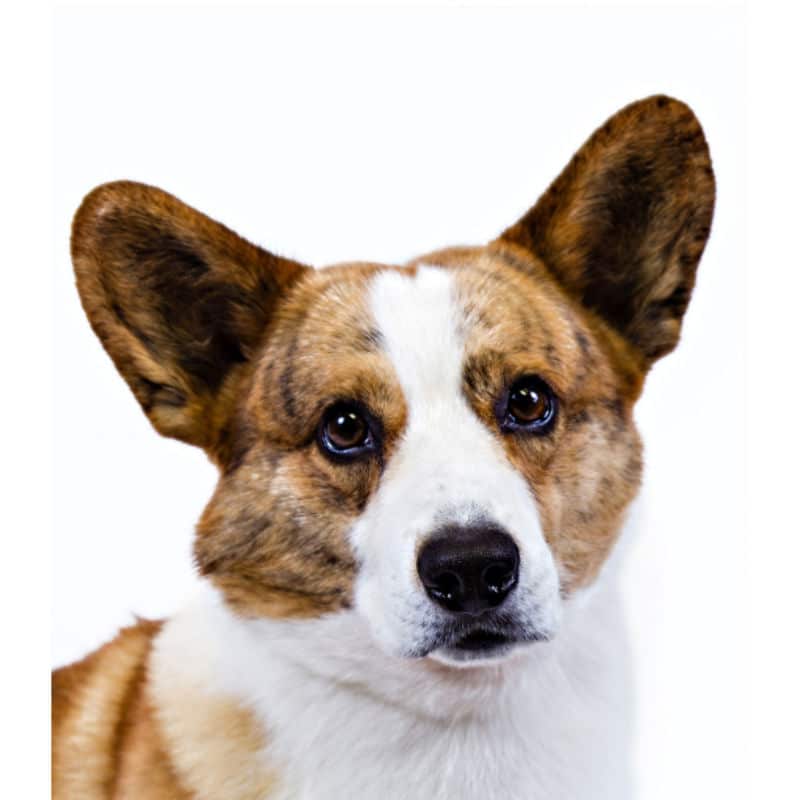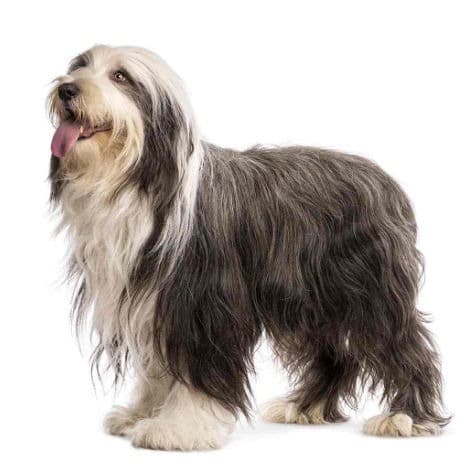Pumi
Great little dog for family life, restless when playing
The Pumi came into being during the 17th to the 18th century in Hungary by crossbreeding the primitive Puli with imported German and French dogs of Terrier type with prick ears.It has been recognised as an independent breed at the beginning of the 20th century.
-
Head
Relatively long and narrow.
The shape of the head is characterised by the elongated muzzle. -
Head - cranial region
Skull: The top of the head is relatively broad and domed. The long forehead is only slightly domed and flat seen from the side. The superciliary ridges are moderately developed.
Stop: Barely perceptible, the forehead running an almost straight line between the eyebrows towards the bridge of the nose. -
Head - facial region
Nose: Narrow, bluntly cut-off. Always black in all coat colours.
Muzzle: The bridge of the nose is straight. The elongated facial region tapers towards the nose but is never pointed.
Lips: Tight-fitting to the teeth, dark pigmented.
Jaws/Teeth: Strong jaws. The strong, well developed teeth are white.
Regular, complete scissor bite according to the dentition formula.
Cheeks: Well muscled.
Eyes: Set moderately wide apart, slightly oblique. Medium sized oval, dark brown slit-eyes. The expression is lively and intelligent.
The eye-lids are tight and close-fitting to the eyeballs and well pigmented.
Ear: The upright ears are set on high, the upper third of the ears bending forward. The medium sized, even ears show a reverse Vshape. They show alert reactions to all stimulations. -
Neck
Of medium length, little arched, well muscled, forming an
angle of 50 to 55 degrees to the horizontal.
The skin at the throat is tight, dry, without folds. -
Body
Well developed muscles, dry, exceptionally taut and tough.
The breed is particularly lean and of harmonious appearance.
Topline: Straight.
Withers: Pronounced, long, sloping towards rear.
Back: Short, straight and taut.
Loins: Short, firmly coupled, straight.
Croup: Short, slightly sloping, of medium breadth.
Chest: The forechest is straight, not broad, rather deep. Ribs slightly arched, rather flat. The brisket is deep, long and reaches to the elbows.
Underline and belly: Tight, tucked up towards rear. -
TAIL
The high set tail forms a wide circle above the croup.
The hair on the underside of the tail is 7 to 12 cm long, wiry standing apart, with little undercoat.
A natural stumpy tail or tail docking are not permitted. -
Forequarters
General appearance: The front legs, placed under the forechest, support the body like pillars. They are vertical, parallel and not too wide apart.
Shoulder: The shoulder blade is long and a little steep. Angle to the horizontal is approximately 55 degrees. The points of the shoulder blades are placed vertically above the deepest point of the brisket.
Upper Arm: Short and well muscled. The shoulderblade and the upper arm form an angle of 100 to 110 degrees.
Elbow: Close-fitting to the body.
Forearm: Long, gaunt.
Pastern: Steep.
Forefeet: Rounded cat feet with well knit toes. The pads are springy. Nails strong, black or slate grey. -
Hindquarters
General appearance: The hindlegs are very strong. Seen from the side, they are somewhat extended beyond the rear. Seen from behind, the legs are parallel, straight, standing neither too narrow nor too wide apart.
Upper thigh: Muscular, long, sloping to the rear.
Stifle: On the same level as the elbows.
Lower thigh: Long, dry.
Hock joint: The hock is lean with clean outlines.
Metatarsus (rear pastern): Short, steep.
Hind feet: Like forefeet. Dewclaws are not desired. -
Gait / Movement
Quite lively and spirited. Stride short, energetic, dynamic and harmonious.
The posture is bold and proud.
The trot is light-footed and harmonious; the dog puts his hind feet exactly into the foot prints of the forefeet. -
Coat - hair
The wavy, curly coat forms tufts and is never smooth or
corded.
The coat has an average length of 4 to 7 cm, growing to smaller or larger tufts; it is elastic, shaggy and dense. It consists of a strong, but not coarse, topcoat and a soft undercoat.
The dense, wiry protective hairs of medium length on the ears grow upwards. The eyes and the foreface are free of long hair.
The desired coat preparation is achieved by hand trimming.
Smaller corrections, done with scissors on head and legs, are possible. Preparing the entire coat with scissors is not desirable. -
Coat - color
• Grey in various shades (normally, the colour at birth is black, turning grey with time).
• Black.
• Fawn (fakó). Primary colours: red, yellow, cream (a trace of
black or grey and a distinct mask are desirable).
A white mark on the chest less than 3 cm in diameter and/or a white line on the toes are not faulty.
• White.
The coat colour must always be intense and solid. -
Size and weight
Height at the withers:
Dogs: 41 to 47 cm; Ideal height: 43 to 45 cm.
Bitches: 38 to 44 cm; Ideal height: 40 to 42 cm.
Weight:
Dogs: 10 to 15 kg; Ideal weight: 12 to 13 kg.
Bitches: 8 to 13 kg; Ideal weight: 10 to 11 kg -
Faults
Any departure from the foregoing points should be
considered a fault and the seriousness with which the fault should be regarded should be in exact proportions to its degree and its effect upon the health and welfare of the dog. -
Disqualifying faults
• Aggressive of overly shy dogs.
• Any dog clearly showing physical or behavioural abnormalities.
• Round, Puli-like head. Foreface shorter than 40 % of the
total length of head
• Strongly defined stop.
• One or more missing teeth (incisors, canines, premolars 2-4, molars 1-2). More than two missing PM1. The M3 are
disregarded.
• Over- or undershot mouth, wry mouth.
• Completely upright prick ears. Ears pendant from base or
carried unevenly.
• Short smooth coat. Long, very matted, sticking out or dull
coat.
• Chocolate coloured, multicoloured coat. All uniform, clearly
defined patches (i.e. tan markings, mantle forming marking).
Size deviating from the height limits given by the standard.
NB:
• Male animals must have two apparently normal testicles
fully descended into the scrotum.
• Only functionally and clinically healthy dogs, with breed
typical conformation should be used for breeding.

